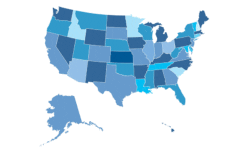The Emergency Response Team Roadmap for Your School
An emergency response team is a great way to improve emergency preparedness and keep your school safe.

Forming an emergency response team and conducting regular drilling can keep your school prepared for any emergency.
Forming an emergency response team is unfortunately necessary at every school district.
Recent emergencies at schools of all backgrounds and sizes across the country have shown the flaws of the “It won’t happen here” mentality. These days, frankly, school officials have no excuse for being blind-sided when a major emergency event occurs.
That’s not to say that achieving emergency preparedness is easy. Emergency response has to be well coordinated, multi-faceted and quick. That’s why emergency preparedness has to start long before an emergency occurs.
As such, an increasing amount of school districts are forming their own emergency response team with staff members as a way to quickly organize a response to whatever emergency might arise.
Emergency response teams, also referred to as crisis response teams or emergency command teams, provide districts with a set plan to activate in the critical first minutes after an emergency begins. If done correctly, the teams can give everyone a specific function with clearly defined priorities that make it that much easier to flip the switch into crisis response mode.
After seeing emergency response teams successfully handle a wide range of emergencies, it’s hard to argue against the impact of an emergency response team made up of individuals who have undergone effective emergency training. Still, the process of forming the teams may appear daunting at first, and school districts with limited resources are understandably cautious about implementing ambitious new policies.
But after speaking with schools that have developed an emergency response team and exploring the myriad resources available for improving emergency preparedness, it appears a lack of understanding may be the only thing holding some districts back. This article aims to fix that.
The Benefits of an Emergency Response Team
Pittsburgh Public Schools is a district of 65 schools with 5,180 full-time employees. Located in a densely populated urban environment with many campuses close to wooded areas, the district has unfortunately seen its fair share of unique emergencies.
PPS officials decided to form emergency response teams after a student was shot a few blocks from a school building just as students were being released for the day.
“It was the worst possible time because we had kids rushing back into the school, so we just jumped into that situation, and after we’d taken care of everybody we learned a lot from our after action review,” former PPS Superintendent Linda Lane, who left the position in June, says. “After sorting everything out, there were some things we thought we could’ve handled better, so we worked toward forming the teams.”
One of the first things PPS officials did was designate a room the district-level emergency response team could begin to operate from, complete with maps of every school campus and their evacuation plans. Improving emergency communications was also identified as a main priority because after the shooting many students informed their parents of the incident before the district had a chance to.
“Now with the district [emergency response] team, parents are well informed about what’s going on, which is especially important in lockdown situations,” PPS Communications Officer Susan Chersky says. “We use a phone messaging system to contact families and, depending on the situation, we send messages on social media and post them on our website.”
Lane says she understands why parents are anxious to get their kids after emergencies, but when officials tell them what their plans are and explain that everyone in the school is fine, parents are far more likely to stay calm.
An emergency response team was also formed at each school to quickly respond to situations and debrief following incidents.
“Our emergency drilling has helped our schools respond efficiently to emergencies,” says PPS Director of Compensation Lynne Casselberry, a leader of the district Incident Response Team. “All schools have safety plans that are filed centrally and all schools have crisis teams that follow the district model.”
Littleton Public Schools in Colorado has also formed district and school-level emergency response teams as part of a robust emergency response program. Just like PPS, the teams at Littleton Public Schools are made up of existing employees.
“One of the most important things about forming an emergency response team is the empowerment,” Guy Grace, the director of security and emergency planning at LPS, says. “Now there are a lot of people in our schools with a clear vested interest in safety, and it forms cohesion between everyone, which increases communication.”
Grace says utilizing faculty and staff members with wide-ranging knowledge sets brings a variety of skills to the table when it comes to solving problems. Grace also noted that being part of an emergency response team gives staff members confidence during emergencies because each employee knows that they are part of a larger team-effort.
Schools Form Emergency Response Teams Scratch
The process of developing a fully functioning emergency response team may seem intimidating, but there’s plenty of resources out there to help school officials get started. The Federal Emergency Management Agency, or FEMA, offers plenty of helpful materials online (check out the Sample Emergency Operations Plan!), as does the Partner Alliance for Safer Schools.
“The PASS goal is to help school districts start out in emergency preparedness however they can, whether that means card access, or maybe they can only afford training, but it’s about giving them guidance,” Grace, who serves as the PASS Steering Committee Director, says.
If you appreciated this article and want to receive more valuable industry content like this, click here to sign up for our FREE digital newsletters!
 Leading in Turbulent Times: Effective Campus Public Safety Leadership for the 21st Century
Leading in Turbulent Times: Effective Campus Public Safety Leadership for the 21st Century
This new webcast will discuss how campus public safety leaders can effectively incorporate Clery Act, Title IX, customer service, “helicopter” parents, emergency notification, town-gown relationships, brand management, Greek Life, student recruitment, faculty, and more into their roles and develop the necessary skills to successfully lead their departments. Register today to attend this free webcast!







